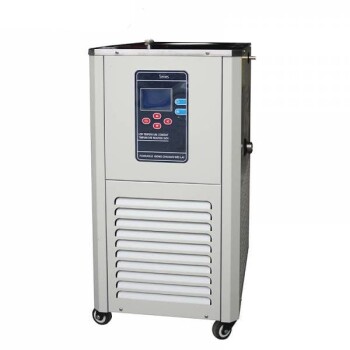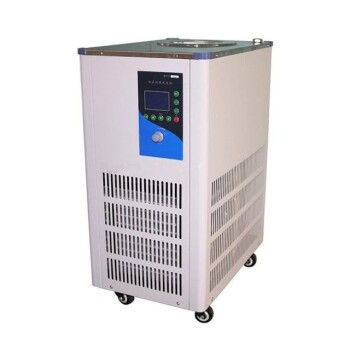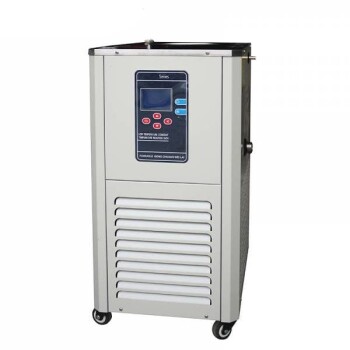The optimal temperature for a chiller connected to a rotary evaporator depends on the specific application and the solvent being evaporated. Generally, the chiller should maintain a temperature that ensures efficient condensation of the solvent vapor without causing thermal degradation of the sample. For most applications, the chiller temperature is set between 15-20°C, which is suitable for condensing common solvents like ethanol. However, for solvents with lower boiling points, such as acetone or ether, the chiller temperature may need to be set lower, around 5-10°C. It is crucial to balance the chiller temperature with the water bath temperature (typically 30-40°C) to ensure smooth evaporation and condensation processes.
Key Points Explained:

-
Chiller Temperature Range:
- General Range: For most solvents, the chiller temperature should be set between 15-20°C. This range is effective for condensing common solvents like ethanol, which has a vapor temperature of 15-20°C during rotary evaporation.
- Lower Boiling Point Solvents: For solvents with lower boiling points, such as acetone or ether, the chiller temperature may need to be lowered to around 5-10°C to ensure efficient condensation.
-
Water Bath Temperature:
- Typical Setting: The water bath is usually set between 30-40°C. This temperature range helps in maintaining a gentle evaporation process, preventing thermal decomposition of sensitive compounds.
- Balance with Chiller Temperature: The chiller temperature should be set in such a way that it complements the water bath temperature. If the water bath is set too high, the chiller may need to work harder to condense the vapor, leading to inefficiency.
-
Importance of Proper Condensation:
- Efficient Condensation: Proper chiller temperature ensures that the solvent vapor condenses efficiently in the condenser, allowing for effective separation of the solvent from the sample.
- Preventing Loss: If the chiller temperature is too high, some solvent vapor may escape condensation, leading to loss of material and potential contamination.
-
Considerations for Specific Applications:
- Thermally Sensitive Compounds: For compounds that are sensitive to heat, it is crucial to set the chiller temperature low enough to prevent thermal degradation while still allowing for efficient evaporation.
- High Boiling Point Solvents: For solvents with higher boiling points, the chiller temperature may not need to be as low, but it should still be set to ensure complete condensation.
-
Operational Tips:
- Monitor and Adjust: Regularly monitor the condensation process and adjust the chiller temperature as needed to maintain optimal performance.
- Check for Leaks: Ensure that the system is properly sealed to maintain the vacuum and prevent any loss of solvent vapor.
By carefully setting and monitoring the chiller temperature, you can ensure efficient and effective rotary evaporation, leading to better separation and recovery of your desired compounds.
Summary Table:
| Key Factor | Details |
|---|---|
| Chiller Temperature Range | - General: 15-20°C (ethanol) |
| - Lower boiling points: 5-10°C (acetone, ether) | |
| Water Bath Temperature | - Typical: 30-40°C |
| - Balances with chiller for smooth evaporation | |
| Condensation Efficiency | - Ensures solvent vapor condenses fully |
| - Prevents material loss and contamination | |
| Application Considerations | - Thermally sensitive compounds: Lower chiller temp |
| - High boiling solvents: Adjust as needed | |
| Operational Tips | - Monitor and adjust chiller temp |
| - Check for leaks to maintain vacuum integrity |
Need help optimizing your rotary evaporation setup? Contact our experts today for tailored advice!






















